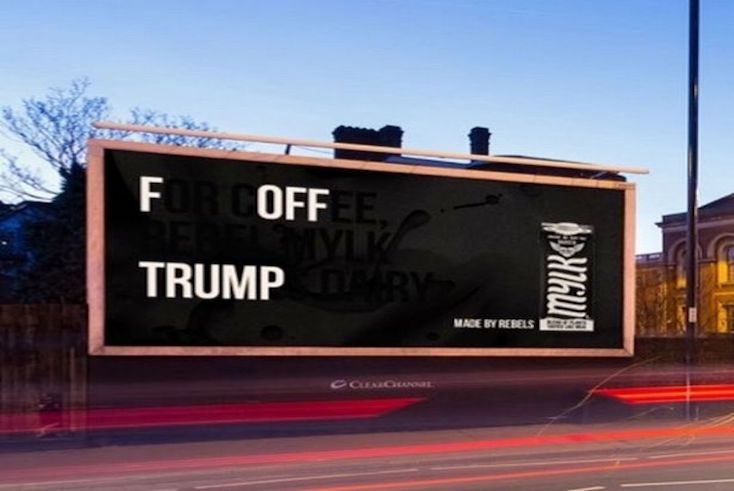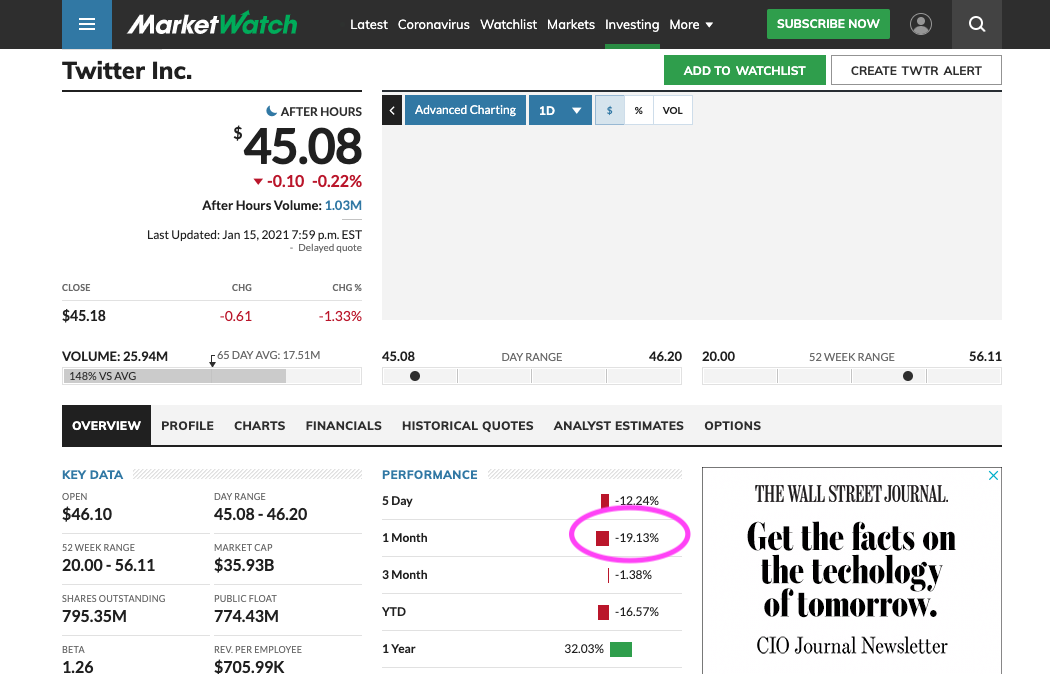Twitter’s Trump-shaped hole; paper rebels; & so long Vizeum

What will become of Twitter now that its main attraction has left the building? Dominic Mills considers the facts and takes a toothless rebel to task over its schoolboy attack.
I’ll leave it to others to continue the debate on the rights and wrongs of Twitter’s decision to ban Donald Trump (me, I’m conflicted: on the one hand, happy see his pulpit removed; on the other, nervous that the power of censorship is concentrated in so few pairs of unelected hands).
I am clearer however, on what the Trump affair has shown us about Twitter.
One, that it has a moral vacuum at its centre.
Sure, it’s been at the forefront of the platforms’ approach to political advertising, arguably leading the way, but to take action on Trump, in reality for what he did off- rather than on-Twitter, and right at the end of his time as President, smacks as both opportunistic and deeply cynical.
“See,” it seems to be saying to the incoming administration, “we’re the good guys, we really are.”
Two, and in a way equally significant, has been the Wall Street reaction to the Trump ban.
You can see it in this chart here, which shows Twitter’s share price over the last month.

Overall, in a month, it is down about 20% — around $8 billion in market capitalisation — but it is the near-vertiginous fall of around 10% on the 11th and 12th January that triggered the subsequent decline.
Facebook’s share price, while also down, has fallen less sharply.
At the heart for Twitter therefore is not just the loss of Trump and his 88-90 million followers (up from 16 million or so back in 2016) — some will go, some stay and some share their time with other platforms — but the engagement levels he brings from all sides, opponents and supporters alike.
In the jargon of Wall Street, Twitter in its latest quarter, (ie before the current fracas) reported 187 million monetisable average daily users.
We don’t know how many of these are down to Trump, but one Wall Street analyst estimates that over 2021, Twitter’s ad revenue could fall by $600 million. I guess that’s the risk when your number one driver of traffic is gone.
But it is possible to take another view, as Group M’s Brian Wieser suggests in his usual thoughtful way here.
This posits the possibility that, as he puts it, “lost consumption from reduced amplification of incendiary content could be partially offset by increased consumption by consumers who have been bothered enough by what happens on the platforms to stay away from them. This is especially true for individuals who have been trolled or who hear hateful content directed to them.”
And the other side of the equation is that brands that have gone off Twitter — either for brand safety or moral considerations — could return now that it is purged.
Hmmm. I am doubtful of that. In my view, brands tend to talk a better game about coming off platforms that promote hate speech than they actually practice.
Anyway, for those that do think about returning, there is plenty of other controversial stuff on Twitter that is just as objectionable as the Trump and Trump-associated content.
If you believe then, as I tend to, that advertiser thinking on these issues isn’t very joined-up, you can see the evidence in keyword blocking.
According to Campaign US, advertisers rushed to update their keyword blocking rules as the riots unfolded around Capitol Hill. Many of these, if they didn’t already, no doubt centred on the word ‘Trump’.
And what is the effect of that? One, to stay away from content that seeks to explain what is going on — and can’t without, for example, mentioning Trump; and two, to penalise those media outlets that seek to report events in an honest and balanced way, the ones whose advertising revenues are the most squeezed.
Paper rebels without a cause
Talking of Trump, a new UK OOH campaign from Rebel Kitchen, which makes plant-based stuff, has a go at the shortly-to-be ex-President.
In an unparalleled example of wokeful courage, it tells him to ‘f-off’ in a manner, described in this news story, as ‘hilarious’. Wow. I expect viewers are doubled-up with an attack of the giggles.
I’m not, and I write as someone who loved the FCUK campaign (remember that?).
Perhaps it believes this will appeal to what must be Rebel Milk’s mostly millennial audience. I imagine the Rebel Kitchen team is high-fiving and congratulating itself. “That’ll show him,” they say.
Apparently, and I’m quoting Rebel Kitchen’s founder directly, “we are rebels with a cause, so we take risks and never shy away from telling it like it is.”
But I suspect many of the audience will be thinking: “Er…he leaves office in 10 days. Why now? What risk are you taking?”.
Quite. What is the point? Other than to generate some cheap PR which, besides a straight reprint of the press release in the Daily Star, it has failed to do.
I think Rebel Kitchen has fallen victim to Brew Dog envy, except without the wit and panache of the latter.
Pathetic. It reminds me of kids (boys, to tell the truth) who flick V-signs behind the back of the head teacher on their last day at school and pretend that, all along, they were the real rebels.
[advert position=”left”]
So long, Vizeum, you never really made your mark
My first reaction on hearing the news that, following its merger into iProspect, the Vizeum name would disappear was one of surprise.
One, that Vizeum still existed. For years it had trundled along beneath the radar, doing an ok job as an alternative to Carat, but hardly ever shaking the trees.
And two, that we haven’t seen more consolidation of media agencies from the big networks. Dig into them at the operating company level, and you’ll see that there are an awful lot of second- and third-string outfits meandering around lacking real identity or differentiation. Perhaps the cull is coming.
Yet, it sees to me that the real story of Vizeum is one of unfulfilled promise.
At the time it fell into the Aegis group, and then Dentsu, Vizeum was positioned as the smaller, faster, smarter alternative to the gorilla that was Carat. Big enough to stand alone in a size-ist world, but not so big as to put off clients who wanted a network a little more independent-minded and planning-led.
It could have been Dentsu’s version of PHD or, from a UK perspective, MGOMD.
And now it is gone, not quite in a puff of smoke but wrapped up in a rationale that, inevitably, seeks to capture the best of both worlds or, as the corporate guff has it a “performance-driven brand-building agency.”
Here’s a big cheese explaining it: “By bringing iProspect and Vizeum together we are creating a global digital-first, end-to-end media proposition. This will give our clients a scaled choice that sits alongside Carat’s brand-first approach and dentsu X’s experience-driven approach while also allowing greater access to our Creative and CXM service lines.”
If you understand that, good on you. To me, it sounds like something a booze company might say if it had two failing brands, one gin, one vodka but was desperate to keep as many of their drinkers as it could.
“We’ve discovered that people who like gin also like vodka, so we’ve decided to give them a whole new alternative, one that combines the best of both: we’re calling it ‘Gin-ka’.”
So long then Vizeum. Gone, and soon to be forgotten.




